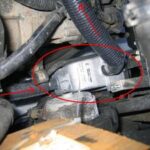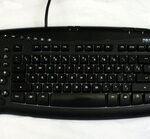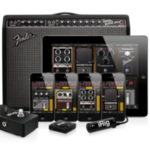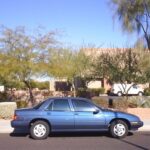Walk up inspection
Keep your keys in your pocket while checking for vehicle leaning, checking for fluid leaks under the Freightliner tractor. Check all lights including clearance lights, headlights, and signal lights. They should be properly mounted and secured. They should be the proper color, not broken, cracked or damaged in any way. Lastly, check fender mounted mirrors, they should be properly mounted and secured, not broken, bent or damaged.
Freightliner engine check
First check the oil level, it should be between add and full, if low add one gallon of 15W40 or whatever the manufacturer recommends. Next, check the water pump, this is a first gear driven accessory, make sure there is no leaking and that the pump is properly mounted and secured. The alternator should be examined next – are all wires properly mounted and secured? The belt should not be frayed, cracked or have more play than 1/2 to 3/4 inch. Now you should check the hoses for cracks and any missing clamps and for leaking. The exhaust should be properly mounted and secured without cracks, damage or leaks. Be sure to make certain there is no soot present on the exhaust as well. Next, check coolant levels. They should be between full and add if there is a sight glass. If there is no sight glass, when engine is cool, take off the radiator cap and add to proper level. The air compressor is a gear driven accessory and should have no cracks, or other damage and should be properly mounted and stable when touched. Hoses associated with the air compressor should be properly mounted on both ends with no audible air leaks. Lastly, the power steering fluid level should be between add and full, follow manufacturer’s specifications if you have any questions.
In cab inspection
First check the seatbelt, it should latch and unlatch properly and easily. Next check your emergency equipment, the fire extinguisher should be fully charged, there should be triangles and fuses/circuit breakers to be used as necessary. The clutch should not stick and there should be two inch play when pushed in. The gear shift in neutral should not bind, go ahead and start the engine with the clutch pressed in. This will allow you to check the oil pressure which should be at 25/45 psi which is normal operating range. Now check the water pressure which should be between 150/200 deg. which is normal operating range. The voltmeter should read between 12/14.5 and the air pressure gauges should read between 100/125 psi for the primary and secondary air tanks if applicable. The mirrors should be properly mounted and secured clean and adjusted for your driving and safety needs. No cracks, pits or illegal stickers should be visible on the windshield and the wipers should have no damage, and working properly. Turn on the wipers to check that there is no damage and that there is sufficient washer fluid. The heater/defroster should be working properly. You would test this by holding your hand up to the vents after you turn on the knob. Your steering wheel should have no more than two inches of play. Toot both horns to make sure they are in working order. Check all dashboard lights and indicators including turn signals, four way flashers, headlights and running lights in the front and rear of cab.
Brake check
The brake tug test should be done with a light gentle application of the brake pedal. Apply the tractor parking brake and release the trailer parking brakes and gently pull against the brakes and make sure they hold, then apply the trailer parking brakes and release the tractor brakes gently pull against them.
Four point brake check is completed after you make sure the air pressure is built up to 100/125 psi and you then shut off the engine leaving the vehicle in gear. Turn the key back to the “On” position for the instrument panel to light up.
Step one: Release both tractor and trailer brakes by pressing in both buttons.
Step two: Static test – after the initial loss of air, wait for one minute for leaks in the air systems to dissipate. You should not have no more that a drop of 3 psi.
Step three: Applied test – apply 90 pounds of pressure to the foot brake and hold for one minute. Again, you are checking for leaks, you should not have no more than a drop of 4 psi.
Step four: Fan down/buzzer test – fan the breaks by pumping the pedal up and down continually to 60 pounds – you should hear the warning buzzer sound off.
Step five: Fan down/buttons – continue fanning brakes down to 40 pounds – this is the point where the trailer brakes button should pop out. At 20 pounds, the tractor brakes button should pop out. Turn off key and exit the vehicle to the driver’s side engine area.
Steering components
The steering gear box with hoses should be properly mounted and secured, not damaged or leaking. All bolts should be in place and hoses should not be cracked, damaged or leaking. Steering linkage including the steering shaft, pitman arm, drag link, steering knuckle and tie rod ends should be properly mounted and secured with no signs of damage or improper bending and all castle nuts and cotter pins should be in place.
Front suspension
Leaf springs should not be cracked, broken or missing, they should also be properly aligned. Spring mounts in the front and rear should have no missing bolts or any damage. U bolts should all be in place and the shock absorbers should be properly mounted and secured not damaged, bent or leaking.
Front steer brakes
The brake hoses should have no audible air leaks. The brake chambers should be properly mounted and secured, not cracked, bent or broken with no audible air leaks. Slack adjuster’s cotter pins should be in place, not broken, bent with an inch of play. While the drums/linings should have no grease or oil on them, if they do this indicates an inner seal leak.
Front tires and rims
Tires should be inflated to 100 pounds or whatever the manufacturer recommends. The condition of the tires should be checked for cuts, bulges, separations and depth of tread which should be no less than 4/32 inch. Rims should not be cracked or bent and there should be no illegal welds or drill holes. Lug nuts should all be present and not loose as indicated by a graphite trail on alloy rims and rust on steel rims. Hub axle seals should be properly mounted and secured, not cracked, damaged or leaking with fluid at the proper levels.
Freightliner fuel tank and cap
Fuel tank should be properly mounted and secured with all straps tight with no damage. The fuel cap should be tight and the seal should have zero damage. The fuel lines should not be damaged or be leaking.
Driver mirror and door
Check for cracks, damage, or improper mountings. Driver door latches should be working properly including the hinges. Check that the window rolls up and down easily and is clean.
Back of cab
Check the air lines from the Freightliner tractor to trailer there should be no signs of damage or any audible leaks. Next check the electrical cord, it should be properly mounted and not dragging on the catwalk with no illegal repairs. The catwalk itself should be clear of loose objects and grease. The drive shaft should be straight with no damage. The frame should have no cracks, damage, illegal welds or drill holes from front to back. Next check the utility light, it should show no cracks and should be the proper color. The battery box should not be cracked or loose.
Freightliner drive axle front and rear suspension
Leaf springs, spring mounts, u bolts, shock absorbers, air bellows, and torque bars should be properly mounted and secured, with no cracks, missing parts or other damage.
Freightliner drive axle front and rear brake system
Brake hoses, chambers, slack adjuster, drums and drum linings should show no cracks, wear or any other damage. All parts should be properly mounted and secured with all parts including bolts in place.
Freightliner drive axle front and rear tires and rims
Tire depth should be no less than 2/32 inch. Rims should not be bent, cracked or have illegal welds or drill holes. Bud rims need no spacers however, you should still look for obstructions. Lug nuts should all be present and tight with no rust or graphite trails. Hub axle seals should not be cracked damaged or leaking. All bolts should be in place and tight.
Rear of Freightliner tractor
Lights and reflectors should be properly mounted and secured, not cracked or damaged, the proper color and functioning properly. Splash guards should be in good shape and not missing.
Fifth wheel
Check the platform bolts for proper mounting on the frame. All mounting bolts should be present and not cracked, damaged or broken. The fifth wheel plate should have all pins in place with no cracks, damage and should be properly greased. The release arm should not be cracked or bent and in the locked position. The apron should have no gap or space showing between the apron and the fifth wheel. Locking jaws around the shank of the kingpin should not have any damage. The kingpin itself should be properly mounted and secured to the frame of the trailer, not cracked or bent.
Front of trailer
The header board should be in good condition with no bulges or tares, no fork life holes. Lights and reflectors should be the proper color, not cracked, broken or damaged. The reflective tape should be silver to red from front to rear of the trailer. The glad hands should not be cracked or damaged. Glad hand grommet should not be cracked or damaged. They should be present with no audible leaks.
Side of trailer
Landing gear should be properly mounted and secured to the frame of the trailer not cracked or bent, legs and feet not damaged, handle works properly and caused the legs to go up and down. The frame of the trailer should have no cracks or any other damage. Check that all lights are in working order and the proper color. The tandem release arm should be in good working order and in the locked position. All pins are in place and not damaged. Tandem slide is not cracked, bent or broken. Lastly, check that the door tie is not cracked, bent or missing and is properly mounted and secured.
Trailer axle suspension front and rear
Leaf springs, spring mounts, u bolts, and torsion bars are all properly mounted and secured, with no cracks, damage or missing bolts.
Trailer axle front and rear brake system
Brake hoses, brake chambers, the slack adjuster, drums with linings are all properly mounted and secured, present with no cracks or damage of any kind.
Trailer axle front and rear tires and rims
Tires are inflated to 100 pounds, with no bulges, tears or separations with tread depth no less than 2/32 inch. Rims are not cracked, broken or bent. Lug nuts are present with no rust trails. Hub axle seals are not leaking and splash guards are not cracked, bent or broken.
Rear of trailer
Door and hinges are present with no damage. Lights are proper color and not cracked or broken. DOT reflective tape is properly mounted and secured with no cracks or other damage.
This completes the Freightliner pre-trip inspection. Your tractor and trailer are safe to depart your location. Be safe, be prepared, be aware.







